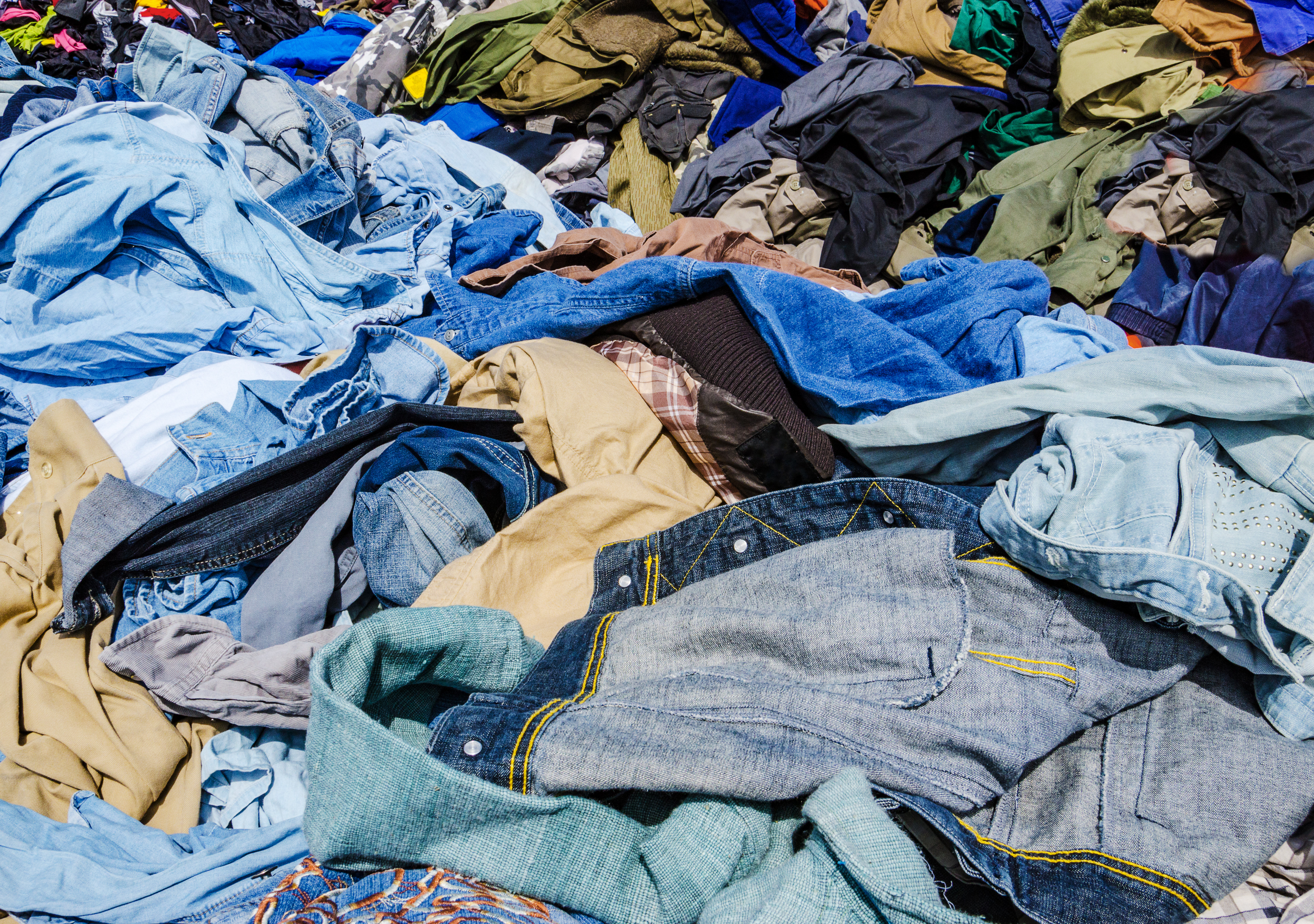Circular Fashion
Laying the Foundation, Part 2: The Critical Role of Reclamation
almost 3 years ago
This is the second in a three-part series on Laying the Foundation for circular fashion.
In Part 1, we defined circular fashion as a world in which all garments are used fully, reclaimed and regenerated into new garments. We also showed how incredibly far we are from that world today. Over the next two articles, we’re going to explore how to get there, initially by exploring the key driver of circularity, and then by exploring the path to consumer adoption.
Given the definition of circular fashion, attaining it requires all three of the following:
- Full use of every garment. Every garment is worn until it’s no longer wearable
- 100% reclamation. Every garment is collected at end of use, either to be resold for further use or regenerated into new garments at end of life
- Comprehensive regeneration. All garments are made from the remnants of previous garments
All three are important, but one – reclamation – stands at the centre. It’s simply impossible to use clothes fully (through resale and reuse) or regenerate them into new clothes if they’re not being reclaimed at end of use. Yet the critical role of reclamation is largely overlooked.
To date, the fashion industry has focused the majority of its attention and virtually all of its circularity investments on regeneration. This has consisted of two parts. Firstly, they have tasked their design teams with creating garments designed for circularity. These garments feature regenerative fabrics, are made to be both durable and repairable, and anticipate the process through which they will be broken down and regenerated at end of life. Secondly, brands have begun making substantial investments in the technologies and production capacity needed to regenerate fabrics. Tens of millions of dollars were invested in textile regeneration in 2022, much of it coming from leading fashion companies such as H&M, Inditex and PVH Corp., and directed at pioneering companies such as Infinited Fiber Company, Worn Again Technologies, Evrnu®, SPC, and Circ™.
A key driver of these investments is a desire to lock in a future supply of regenerative materials, and some of these investments include provisions for guaranteed production capacity from the new facilities being built. What’s not clear is how the brands expect to feed these facilities with used clothes to be regenerated, which of course requires reclamation. It’s also not clear how brands expect to maximise the use of garments prior to regeneration, which – in addition to the durability and repairability of the clothes themselves – requires that clothes be reclaimed at end of use.
The relative lack of interest by brands in reclamation appears to rest on two assumptions. The first is that governments will pass regulations requiring reclamation, either by mandating that consumers throw used clothes in collection bins (the preferred path), or by imposing extended producer responsibility (EPR) laws on brands, which – though unappealing to the brands in general – would at least impose the burden of reclamation on all brands equally. But government-driven reclamation presents several flaws. The first is that it could take a very long time, and will likely be applied inconsistently across regions. The second is that the garments being collected would arrive randomly and anonymously, meaning an entire infrastructure will need to be built to identify and sort by material content all the items being received. Advancements such as Circular IDs could significantly simplify this process, but the technologies to facilitate identification and sorting are still in their infancy, and the time and investment required to build and deploy the necessary infrastructure could be substantial. A final flaw is that government-driven reclamation does nothing to tie reclamation with the use or condition of the garments being collected. All items are collected when people decide it’s time to get rid of them, with no regard as to whether a garment is still wearable, or how long it’s been since it was last worn. As a result, many – likely a majority – of the garments being collected for end-of-life processing will still be wearable, and whether wearable or not, they are likely to have spent many months (sometimes years) sitting idle in someone’s closet before collection.
The second assumption often made by brands is that consumer interest in resale is growing organically, and that it will ultimately eliminate fashion’s usage problem all by itself. Some even believe that resale is already a substantial factor in the industry, and are surprised to learn it involves less than 16% of clothes worldwide. The problem is that while resale demand is indeed growing somewhat organically through changing consumer attitudes, resale supply remains entirely dependent on consumer incentives and convenience. Very, very few people take the trouble to sell their used clothes if there is even a modicum of effort involved, and even donating them to charity requires effort. This is a lesson we learned the hard way when building our company Stuffstr. The reason the supply of clothes for resale has been increasing is because online resellers such as thredUP and Vestiaire Collective have been working feverishly to make it easier for people to sell their used clothes. But it’s costly for them to do so. They have to continually recruit new sellers, incentivise them to pack and ship their clothes, identify and authenticate the items received, etc. As a result, few if any online resellers have achieved profitability, and it’s unclear if or when they ever will.
Fashion brands are much better positioned to reclaim and resell clothes profitably. They have ongoing relationships with potential sellers, they can minimise identification and authentication costs through product traceability, and they have a ready base of buyers for their products. But brands are in the business of selling new clothes, not taking back and reselling used versions. To the extent they have engaged in take-back and resale, it’s been at best a fringe activity, typically used primarily as a marketing initiative to promote new sales (by issuing vouchers to sellers of used items), bolster their sustainability credentials, and emphasise brand longevity by showcasing great-looking used versions of their clothes. Given this, it’s little wonder that the top-rated branded take-back/resale programme in the industry, Patagonia Worn Wear, reclaims only 1-2% of items sold (it is, however, a profitable operation).
Our previous company, Stuffstr, fared significantly better, achieving (when all the stars were aligned) reclamation rates as high as 20% of items sold for our brand partners such as John Lewis and Adidas. We did this by making reclamation our #1 priority. So we accepted all items, not just higher-priced items in excellent condition, paid sellers a guaranteed sell-back price for every item regardless of condition, and made the process as close to frictionless for sellers as possible (sellers could simply tap on images of previous purchases they no longer wanted; we would then pick the items up for free and pay sellers instantly). And we did this through a tech-enabled customer experience that earned us the 2020 World Retail Award for Retail Technology Game-Changer.
Consumers loved our service – one partner brand received the highest customer satisfaction rating they had ever received. But no matter what we did, we found we couldn’t reclaim more than 20% of items sold. Why? Because we sat outside customers’ normal shopping experience. We were essentially retrofitting a circular solution onto the back of a linear process. To achieve 100% reclamation at end of use, we need to engage consumers in a circular experience from the moment they begin shopping until their used clothes have been reclaimed.
In the final article of this three-part series, I’ll explore what it takes to engage consumers in a fully circular journey, what that means from a business standpoint, and why circular fashion ultimately represents a massive win for both consumers and brands.

Co-Founder/CEO at Circular Way | Circular Economy Strategist
